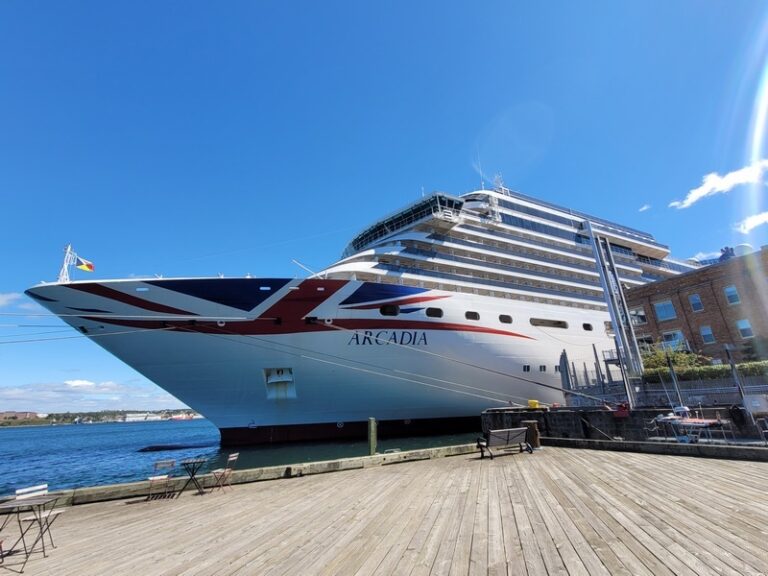The Hidden Risks Of Cruise Ship Massages
Get ready to relax and unwind on your next cruise vacation, but be cautious when it comes to booking that well-deserved massage. In our article, “The hidden risks of cruise ship Massages,” we will explore the potential dangers lurking beneath the soothing atmosphere of onboard spas. From unqualified therapists to hidden fees, we’ll uncover the secrets you need to know to ensure a safe and enjoyable massage experience. So, before you slip into that plush robe and surrender to bliss, let’s take a closer look at the hidden risks of cruise ship massages.
Understanding Cruise Ship Massages
The appeal of cruise ship spas and massages
Cruise ship vacations are a popular choice for many, offering relaxation, adventure, and a chance to explore different destinations. One of the highlights of a cruise is often the onboard spa, where passengers can indulge in a variety of treatments, including massages. The appeal of cruise ship spas and massages lies in the luxurious and serene environment they provide. With tranquil settings, soothing sounds, and skilled therapists, cruise ship spas offer a blissful escape from the hustle and bustle of everyday life.
The range of massage services offered on cruise ships
Cruise ship spas typically offer a wide array of massage services to cater to the diverse needs of their passengers. From traditional Swedish massages to hot stone therapy, deep tissue massages to aromatherapy, there is a massage style to suit everyone’s preferences. Some cruise lines even offer specialty massages, such as prenatal massages for expectant mothers or sports massages for those in need of muscle recovery. With such a range of options, passengers can personalize their spa experience and find the perfect massage to help them relax and unwind.
The professionals behind cruise ship massages
Cruise ship spas employ highly skilled and trained massage therapists to ensure that passengers receive the highest quality treatments. These professionals have extensive knowledge of different massage techniques and are experienced in providing therapeutic and rejuvenating experiences. They are trained to assess individual needs and tailor the massage to address specific concerns, whether it be relieving tension, promoting relaxation, or targeting specific areas of discomfort. Passengers can rest assured that their massage therapist on a cruise ship is well-qualified to provide a safe and effective treatment.
Questionable Sanitation Practices
The challenges of maintaining hygiene on cruise ships
Maintaining proper hygiene on cruise ships can be a challenging task, given the large number of passengers and the constant movement of people in and out of the ship. Cruise ship spas are no exception to this, and additional precautions must be taken to ensure the cleanliness and sanitation of the spa facilities. The close proximity and shared spaces on a ship make it easier for germs and bacteria to spread, making it crucial for cruise lines to implement rigorous cleaning and sanitization practices.
Potential implications of poor sanitation
Poor sanitation practices in cruise ship spas can have serious implications for passengers. Inadequate cleaning of massage tables, towels, and equipment can lead to the spread of infections, such as fungal or bacterial skin infections. The warm and humid environment of the spa can create an ideal breeding ground for bacteria and other microorganisms. Passengers receiving massages in an unsanitary environment are at risk of contracting these infections, which can cause discomfort, extended recovery periods, and even ruin the entire cruise experience.
Signs of poor hygiene practices to watch out for
Passengers should be vigilant and look out for signs of poor hygiene practices in cruise ship spas. These may include dirty or stained towels, unclean or disorganized treatment rooms, and therapists who do not follow proper hand hygiene protocols. It is important to speak up and voice concerns if any of these signs are observed, as maintaining high standards of cleanliness is essential for the well-being of passengers. Cruise lines have a responsibility to ensure that their spa facilities adhere to rigorous hygiene practices, and passengers should not hesitate to raise any concerns they may have.

Untrained and Under-qualified Practitioners
Importance of properly trained massage therapists
Proper training and qualifications are essential for massage therapists on cruise ships to deliver safe and effective treatments. Massage therapy is a specialized field that requires knowledge of anatomy, physiology, and various massage techniques. Trained therapists understand how to apply the right pressure, use proper body mechanics, and identify any contraindications or limitations. They can also provide appropriate aftercare advice to ensure the well-being of passengers following their massage. Properly trained therapists are crucial to providing a positive and therapeutic experience for cruise ship passengers.
Risks of getting massages from under-qualified practitioners
Getting a massage from under-qualified practitioners on a cruise ship can pose serious risks to passengers’ well-being. Without the necessary training and expertise, these individuals may not have a thorough understanding of massage techniques, anatomical structures, or contraindications. They may apply excessive pressure, use improper techniques, or overlook underlying health conditions, which can potentially cause harm or injury to the passenger. It is essential for passengers to be aware of the qualifications and credentials of their massage therapist to ensure a safe and beneficial experience.
How to verify your cruise ship massage therapist’s qualifications
Passengers can take proactive steps to verify the qualifications of their cruise ship massage therapist. Before booking a massage, it is recommended to inquire about the therapist’s training and credentials. Reputable cruise lines will have strict hiring policies that ensure therapists are properly trained and licensed. Passengers can also ask for references or certifications to validate the therapist’s qualifications. Additionally, online reviews and feedback from previous passengers can provide insight into the quality and professionalism of the therapists on board. Taking these measures can help passengers feel confident in the qualifications of their massage therapist and enhance their overall spa experience.
Inconsistent Regulation and Supervision
Variation in regulation across different cruise lines
Regulation and supervision of spa facilities on cruise ships can vary across different cruise lines. While some cruise lines have strict guidelines and protocols in place, others may have less stringent regulations. This variation can impact the quality and safety of spa services offered on board. Passengers should be aware of the level of regulation and oversight provided by their chosen cruise line to make informed decisions about their spa experiences.
Potential dangers of insufficient industry oversight
Insufficient industry oversight in the spa sector of the cruise industry can lead to potential dangers and risks for passengers. Without adequate regulation and supervision, it becomes easier for unqualified practitioners, unsanitary practices, and unethical business practices to go unnoticed and unaddressed. Passengers may unknowingly put their health and well-being at risk by patronizing spas on cruise ships that lack proper oversight. It is crucial for cruise lines and regulatory bodies to work together to establish standardized guidelines and ensure consistent supervision to protect the safety and well-being of passengers.
Questions to ask about spa regulation and supervision
Passengers can take a proactive approach by asking pertinent questions about spa regulation and supervision before booking a cruise. Some questions to consider may include: What protocols are in place to maintain cleanliness and hygiene in the spa? What qualifications and experience do the massage therapists have? How often are inspections conducted and by whom? What steps are taken to ensure compliance with industry standards? By seeking answers to these questions, passengers can gain insight into the level of regulation and supervision provided by the cruise line and make an informed decision about their spa experiences.

High-Pressure Sales Tactics
Common sales tactics used in cruise ship spas
High-pressure sales tactics are not uncommon in cruise ship spas, where the goal is often to upsell additional services and products. Spa staff may employ aggressive or pushy sales techniques, trying to convince passengers to purchase packages, upgrades, or specific products. They may create a sense of urgency or use persuasive language to make passengers feel compelled to make a purchase.
Implications of succumbing to these tactics
Succumbing to high-pressure sales tactics in cruise ship spas can have several implications for passengers. Firstly, it can lead to unnecessary spending as passengers are persuaded to buy services or products they may not actually need or want. Secondly, it can create a sense of discomfort or unease during the spa experience, as the focus switches from relaxation to sales. Lastly, passengers may end up feeling dissatisfied or taken advantage of if they later realize they made a purchase under pressure.
Ways to deal with high-pressure sales situations
Passengers can employ various strategies to deal with high-pressure sales situations in cruise ship spas. Firstly, it is important to set boundaries and communicate clearly with spa staff about one’s preferences and budget. Politely declining additional services or products and expressing that you are satisfied with the treatment you have booked can help deter further sales attempts. If necessary, passengers can request additional time to consider any offers before making a decision. It is important to remember that the spa experience should be about relaxation and rejuvenation, rather than feeling pressured to make purchases.
Potential for Muscular Damage
Understanding proper massage techniques
Proper massage techniques are essential to ensure the well-being of passengers and prevent muscular damage. Skilled massage therapists are trained to apply appropriate pressure, use correct hand and body positions, and tailor their techniques to suit individual needs. They understand the importance of respecting the body’s limitations and avoiding excessive force or manipulations that can cause harm.
Signs of an improperly done massage
An improperly done massage can have negative effects on the body, causing discomfort or even injury. Signs of an improperly done massage may include excessive pain or soreness during the treatment, discomfort in specific areas after the massage, or a general feeling of fatigue or weakness. Passengers should trust their instincts and communicate with their massage therapist if they experience any discomfort during the treatment.
Long-term implications of muscular damage from massages
Muscular damage from massages can have long-term implications for passengers. Injuries such as muscle strains, tears, or sprains can result in prolonged pain, restricted mobility, or decreased functionality. This can significantly impact a passenger’s cruise vacation, limiting their ability to fully participate in activities or enjoy their chosen excursions. It is essential for passengers to prioritize their safety and well-being by ensuring they receive massages from skilled and qualified professionals who understand the importance of proper techniques.

Allergy Risks with Spa Products
Common allergens present in spa products
Spa products, including lotions, oils, and scrubs, often contain various ingredients that can trigger allergies or sensitivities. Some common allergens found in spa products include fragrances, essential oils, lanolin, preservatives, and nut oils. Passengers with known allergies or sensitivities should be cautious and inquire about the ingredients used in the spa products before undergoing a treatment.
Potential health implications of allergic reactions
Allergic reactions to spa products can range from mild to severe and can have serious health implications for passengers. Mild reactions may include skin redness, irritation, or itching. However, more severe reactions can lead to swelling, difficulty breathing, or even anaphylaxis, a potentially life-threatening allergic reaction. Passengers with allergies should take necessary precautions, such as informing their massage therapist about their allergies and potentially carrying medication in case of an allergic reaction.
Ensuring you’re informed about product ingredients
Passengers can play an active role in ensuring their safety by being informed about the ingredients used in spa products. Before booking a treatment, it is important to ask the spa staff about the specific ingredients in the products they use and inquire about any potential allergens. Reading product labels and researching common allergens can also help passengers identify any ingredients they may be allergic to. By taking these steps, passengers can better protect themselves against allergic reactions and make informed decisions about their spa experiences.
Privacy and Confidentiality Concerns
Possible issues with privacy and confidentiality on cruise ship spas
Privacy and confidentiality can be a concern in cruise ship spas, where numerous passengers receive treatments in close proximity to each other. The layout and design of the spa may make it challenging to create completely private spaces, leading to potential breaches of privacy. Passengers may feel uncomfortable if they perceive that others can see or hear their treatment or if they fear their personal information may be disclosed.
The importance of respecting client confidentiality
Respecting client confidentiality is paramount in the spa industry, including cruise ship spas. Spa staff should uphold professional standards and practices to ensure the privacy and confidentiality of each client. This includes maintaining discrete treatment areas, using soundproofing techniques where applicable, and implementing strict protocols to protect personal information. Passengers should feel confident that their privacy and confidentiality will be respected throughout their spa experience.
Questions to ask about privacy policies
Passengers can address privacy concerns by asking relevant questions about privacy policies before booking a treatment. Some questions to consider may include: How is privacy maintained in the treatment rooms? Are there any measures in place to ensure discretion during treatments? How is personal information handled and protected? By seeking answers to these questions, passengers can gain insight into the privacy practices of the cruise line and make informed decisions about their spa experiences.
Risk of Heat Stroke from Sauna Use
Understanding the risk factors of sauna use
Saunas are a popular feature in cruise ship spas, offering passengers a chance to relax and detoxify. However, it is important to be aware of the risk factors associated with sauna use. Saunas expose the body to high temperatures and humidity, which can lead to dehydration, heat exhaustion, and potentially heat stroke. This risk is heightened for individuals with certain medical conditions, such as cardiovascular problems, low blood pressure, or diabetes.
Symptoms and dangers of heat stroke
Heat stroke is a potentially life-threatening condition that can occur as a result of prolonged exposure to high heat and humidity. Symptoms may include a rapid and strong pulse, high body temperature, hot and dry skin, dizziness, confusion, and even loss of consciousness. If not treated promptly, heat stroke can cause organ damage or failure and can be fatal. Passengers should be aware of these symptoms and seek immediate medical attention if they or someone else experiences them.
Safe practices for using saunas on cruise ships
To reduce the risk of heat stroke and other heat-related illnesses, passengers should follow safe practices when using saunas on cruise ships. Staying hydrated by drinking plenty of water before, during, and after sauna sessions is essential. Limiting the duration of sauna use and allowing the body to cool down and rehydrate between sessions is also important. It is recommended to listen to the body and exit the sauna if any symptoms of heat exhaustion or heat stroke arise. Following these practices can help passengers safely enjoy the benefits of sauna use while minimizing the associated risks.
Avoiding the Risks: Tips for Safer Experiences
Choosing reputable cruise lines with good health and safety records
Choosing a reputable cruise line with a good track record in health and safety is an important step towards ensuring a safe spa experience. Researching cruise lines and reading reviews from previous passengers can provide insight into the cruise line’s commitment to maintaining high standards in their spa facilities. Vetted and established cruise lines are more likely to have robust protocols, regulations, and oversight in place to protect the well-being of their passengers.
Knowing the right questions to ask about spa practices
Being informed and asking the right questions about spa practices is key to ensuring a safer spa experience on a cruise ship. Passengers should inquire about hygiene practices, therapist qualifications, regulation and supervision, and privacy policies before booking a treatment. This can help identify cruise lines that prioritize safety and quality in their spa services and avoid potential risks associated with inadequate practices.
Understanding your rights as a cruise ship spa patron
Passengers should familiarize themselves with their rights as spa patrons on a cruise ship. This includes their right to privacy, confidentiality, and a safe and enjoyable spa experience. Cruise lines have a responsibility to prioritize passenger safety and well-being and should address any concerns promptly. Passengers should feel empowered to voice their concerns, seek clarification, and hold cruise lines accountable for maintaining high standards in their spa facilities.
In conclusion, while cruise ship spas and massages offer a luxurious and relaxing experience, there are potential risks and concerns that passengers should be aware of. Maintaining proper hygiene, ensuring therapist qualifications, understanding regulations and oversight, avoiding high-pressure sales tactics, preventing muscular damage, minimizing allergy risks, protecting privacy, and being mindful of sauna use are all important considerations for a safer spa experience on a cruise ship. By being informed, asking the right questions, and taking necessary precautions, passengers can enjoy the benefits of cruise ship massages while minimizing potential risks.






